I’ve long been fond of the 22 Magnum, or the 22 Winchester Magnum Rimfire (WMR) if you wish to get “proper.” It’s a fine cartridge that was introduced in 1959 and has been going strong ever since. A wide array of firearms have been (and continue to be) made to fire this impressive round, which makes the 22 LR seem plumb tame.
I’m also a devotee of heavy bullets, or at least “heavy for caliber” bullets, but when the CCI 22 WMR VNT load came out, I just had to give it a try.
There’s a reason the ammo package says “varmint” — you’re unlikely to have a whole lot of edible meat left on anything you hit with a VNT. Then again, that’s the point!
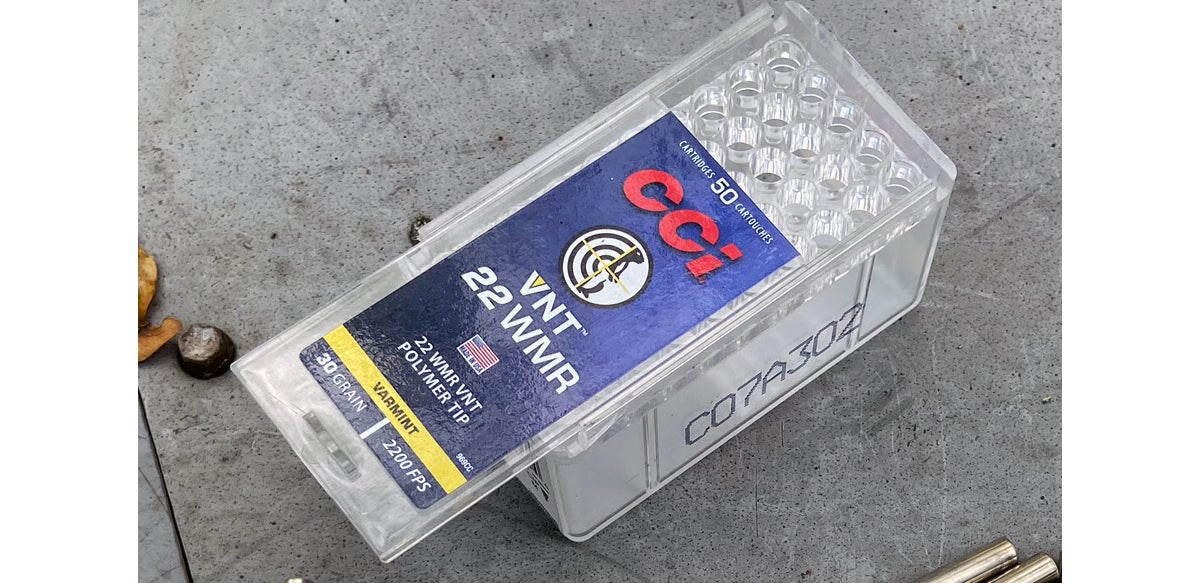
(Photo © Russ Chastain)
The Speer VNT bullet is polymer-tipped and has “an extremely thin jacket” to promote “explosive terminal performance on impact.” The 22 Mag loads use 30-grain VNTs touted to scoot along at 2200 FPS (feet per second), which is a good bit faster than the 17 Mach 2’s 17-grain VNT bullet, spec’d at 2010 FPS. Bigger, heavier bullets going even faster? Yes, please.
I hit the range with three 22WMR firearms:
- Savage Model 65M bolt action rifle with 20″ barrel
- Mossberg Chuckster Model 640KA bolt action rifle with 24″ barrel
- Colt Frontier Scout ’62 single action revolver with 4.75″ barrel
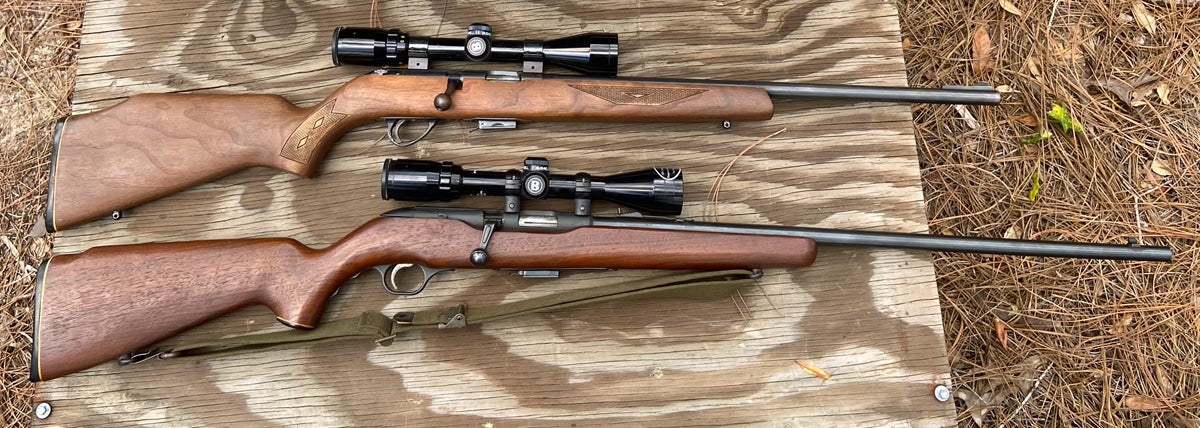
(Photo © Russ Chastain)
I began with some chronograph comparisons using the two rifles and some other 22 WMR ammo I had on hand. Because the barrels differ in length by 4 inches, I decided to test each load in each rifle. For each result you see here, I fired 4 shots and averaged the measurements, which were obtained using a Shooting Chrony placed about 4 yards in front of the shooting bench.
Here are the results in FPS:
CCI 40-grain Jacketed Hollowpoint (JHP)
- Mossberg (24″): 1797
- Savage (20″): 1800
CCI 40-grain Full Metal Jacket (FMJ)
- Mossberg (24″): 1879
- Savage (20″): 1899
Winchester Super X 40-grain FMJ
- Mossberg (24″): 1877
- Savage (20″): 1846
CCI 30-grain VNT
- Mossberg (24″): 2271
- Savage (20″): 2278
As you can see, the 4-inch difference in barrel length didn’t make a lot of difference in bullet speed. But more notably, the VNT ammo measured considerably faster than its advertised 2200-FPS muzzle velocity. That’s impressive.
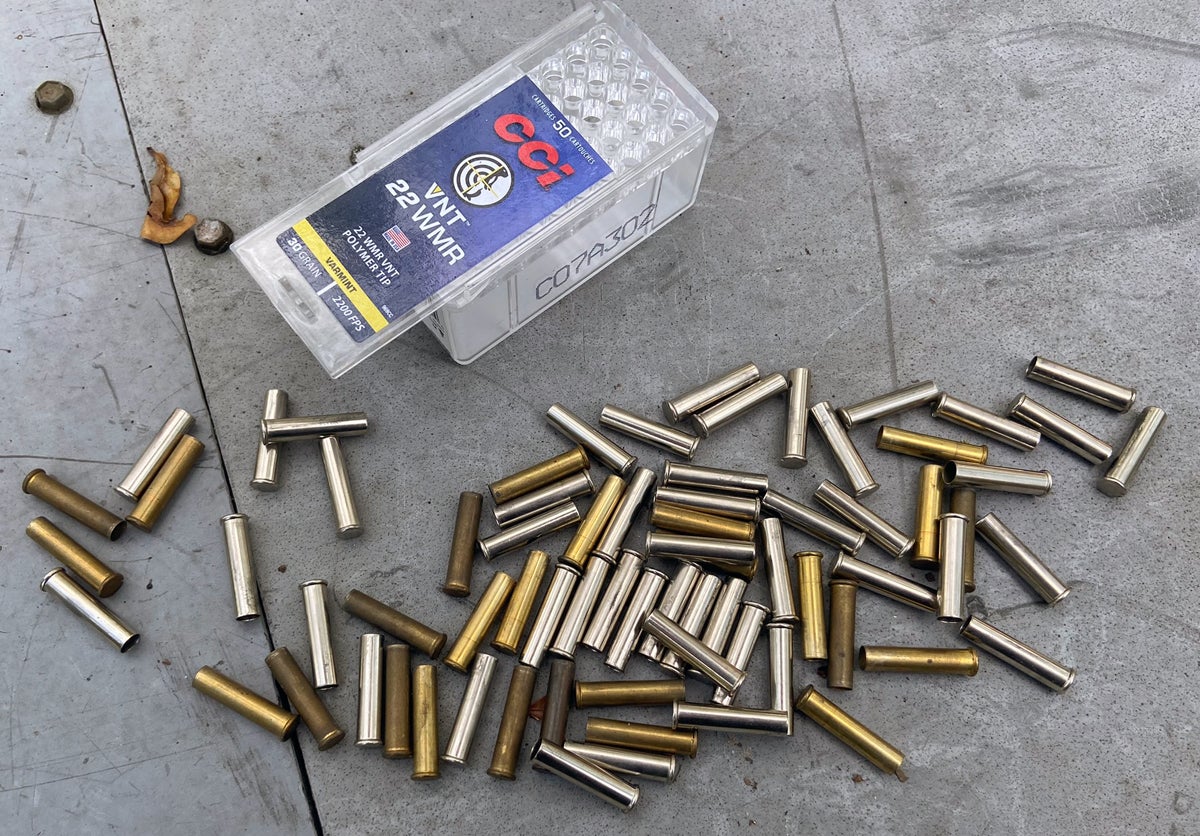
(Photo © Russ Chastain)
The other ammo I fired for comparison is several years old, while the VNT is last year’s batch.
Fun Stuff
Next, I decided to blow up some stuff… kinda. I filled pairs of aluminum soda cans with water, then shot one with conventional WMR ammo and the other with VNT. Scientific? Nah, just fun!
The range was 17 yards.
I first shot a pair of small 7.5-ounce soda cans. Both of them ruptured rather excitedly, with the first being hit with a Winchester Super-X JHP — but the VNT can kinda went BLOOEY just a tad faster than the other. Interestingly, both cans ruptured in almost-identical fashion.
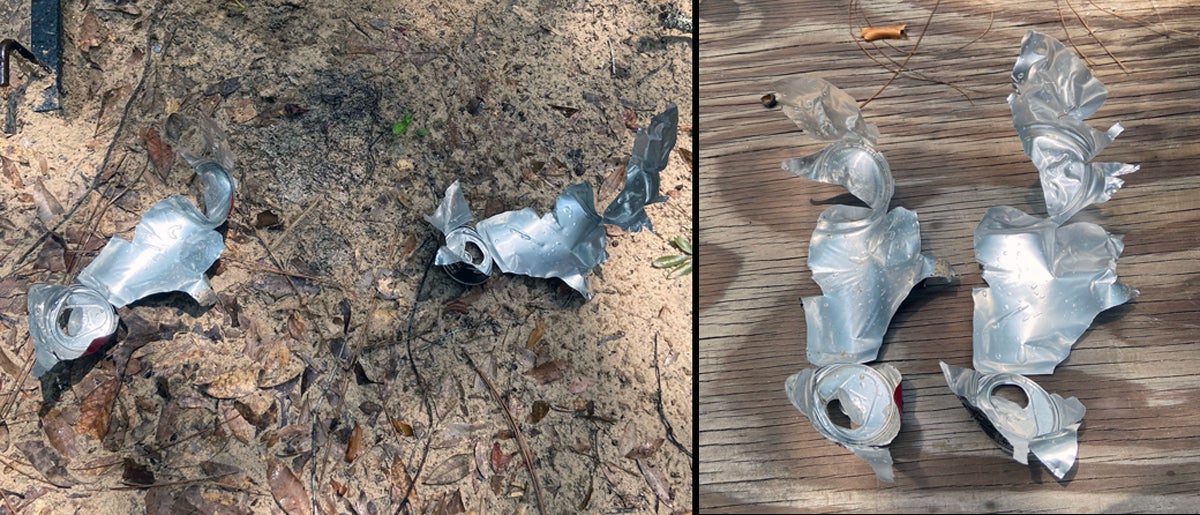
(Photo © Russ Chastain)
Next was a pair of 12-ounce Coke cans and the Winchester Super-X JHP again. Again, both cans blew into similar shreds but the VNT hit was decidedly more violent.
I changed it up for the final pair, which was 12-ounce Cherry Coke cans, the first of which was hit with a CCI JHP, and the second with the VNT. The results were similar to watch, but the bottom of the VNT can seemed to show evidence of considerably greater pressure, as it seemed to have taken on the shape of the sand on which it was setting when shot.
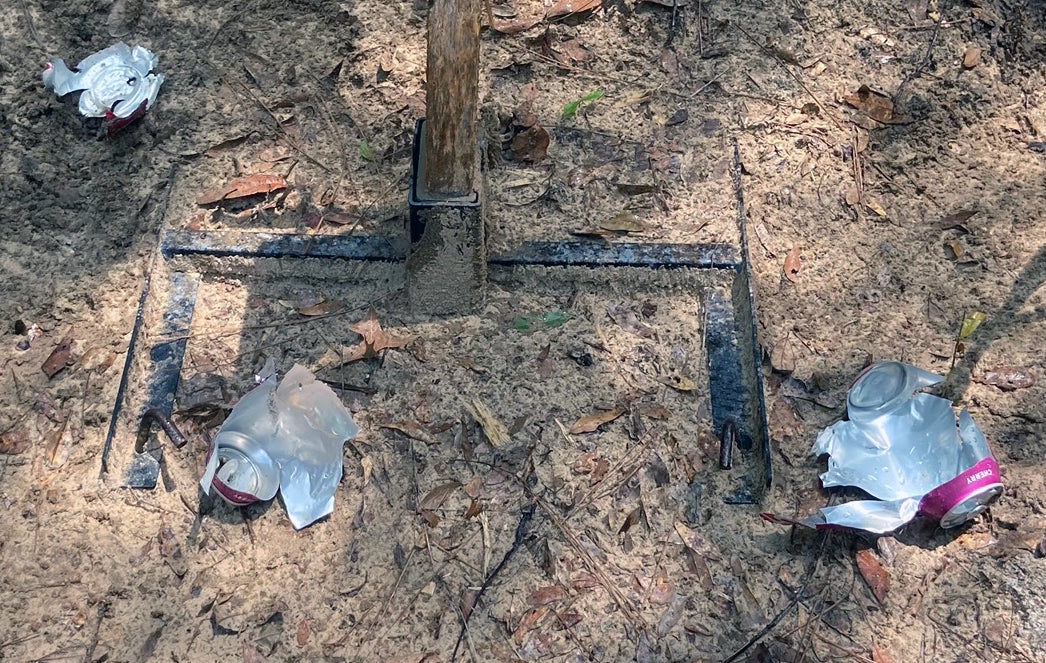
(Photo © Russ Chastain)
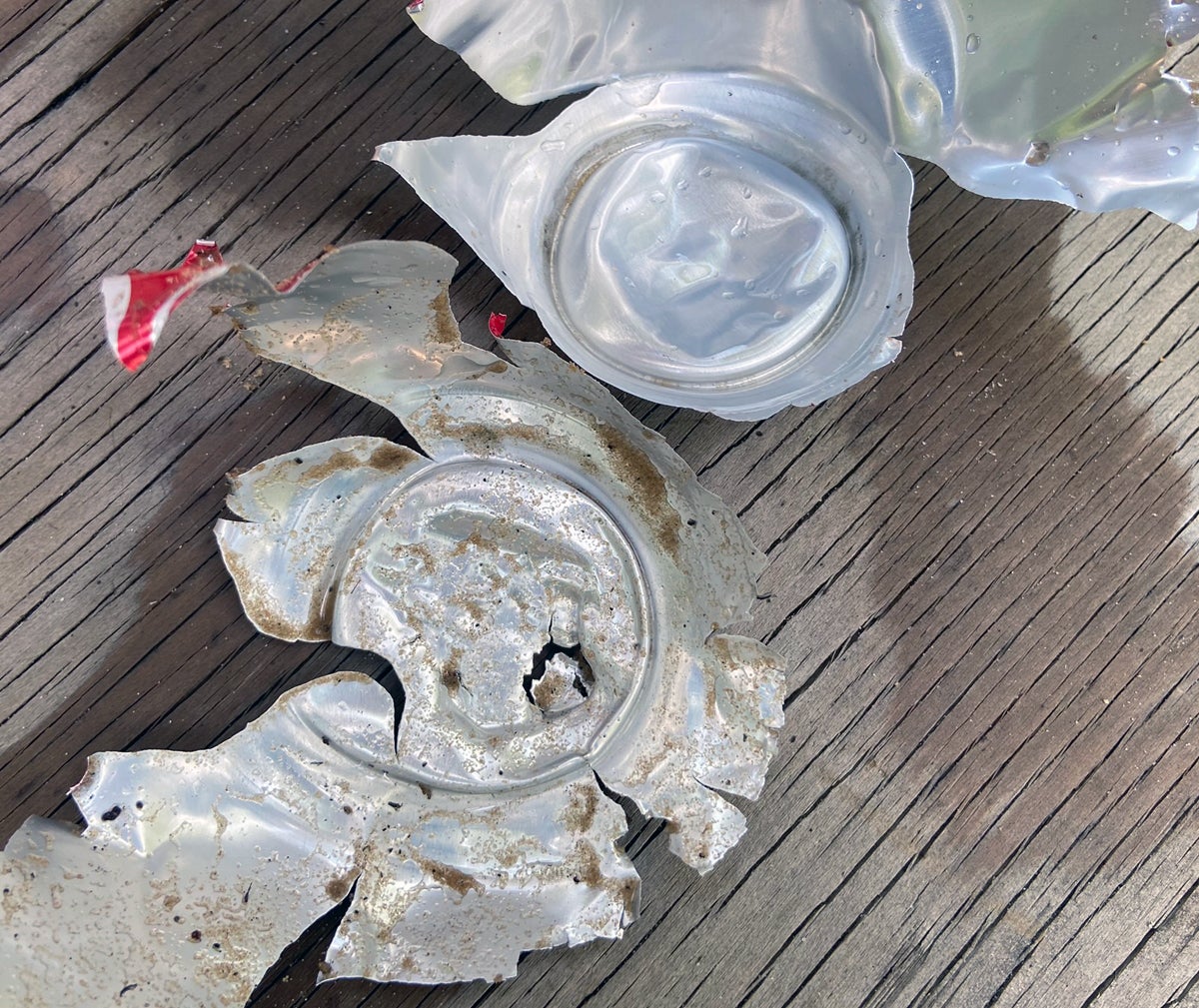
(Photo © Russ Chastain)
For the grand finale, I filled a 3-liter olive oil can with water and capped it, then shot it with some VNTs. I shot a bit of video with my phone, and I have to say I really enjoyed the results.
The first shot caused a really nice explosive rupture and the entire can jumped up about twice its height, and I had to be fast to work the bolt and get another VNT into the can before all the water gushed out. That hit provided another satisfying jump. Then I shot it another time or two for good measure.

(Photo © Russ Chastain)
That little 30-grain VNT pill packs a wallop.
I wasn’t smart enough to take a before and after photo, but this can used to be rectangular and its silver bottom used to be crimped on. Here are some screen shots from the video.
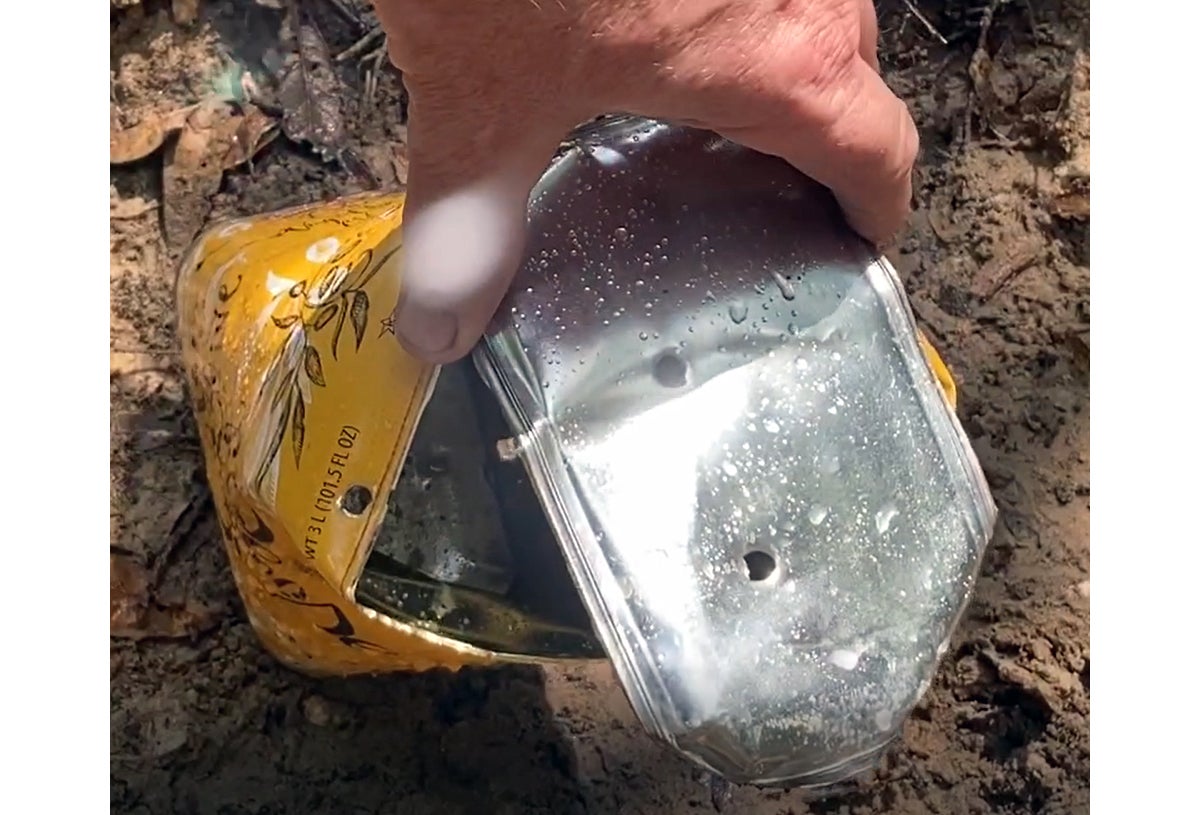
(Photo © Russ Chastain)
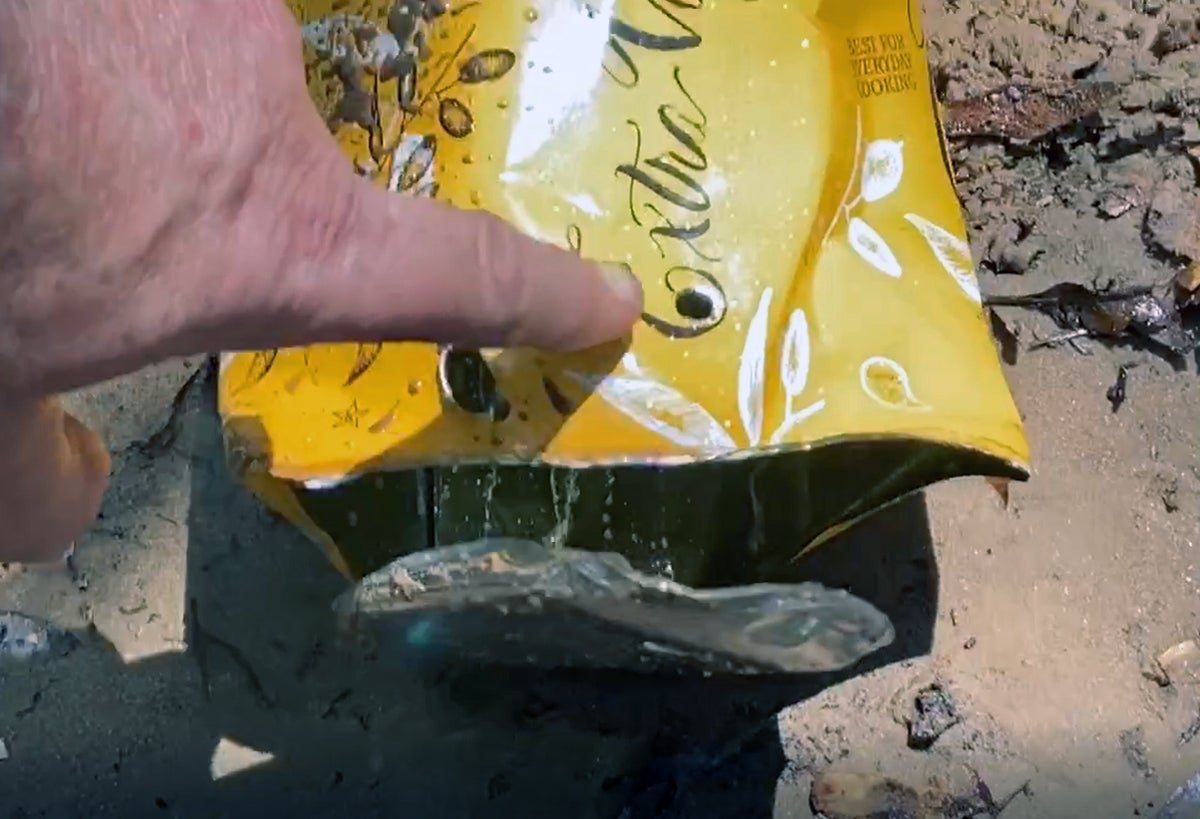
(Photo © Russ Chastain)
Shooting Groups
Next, I slid on out to 50 yards to shoot some groups with the two rifles.
The Mossberg Chuckster has a decidely better trigger pull, and both rifles wear identical scopes, i.e. “el cheapo” Bushnell Sportview 3x-9x with 1″ tubes. The Mossberg’s two 50-yard groups measure 3/8″ and 1″ while the Savage’s groups were 1-1/8″ and 1″ measured center-to-center from the farthest bullet holes.
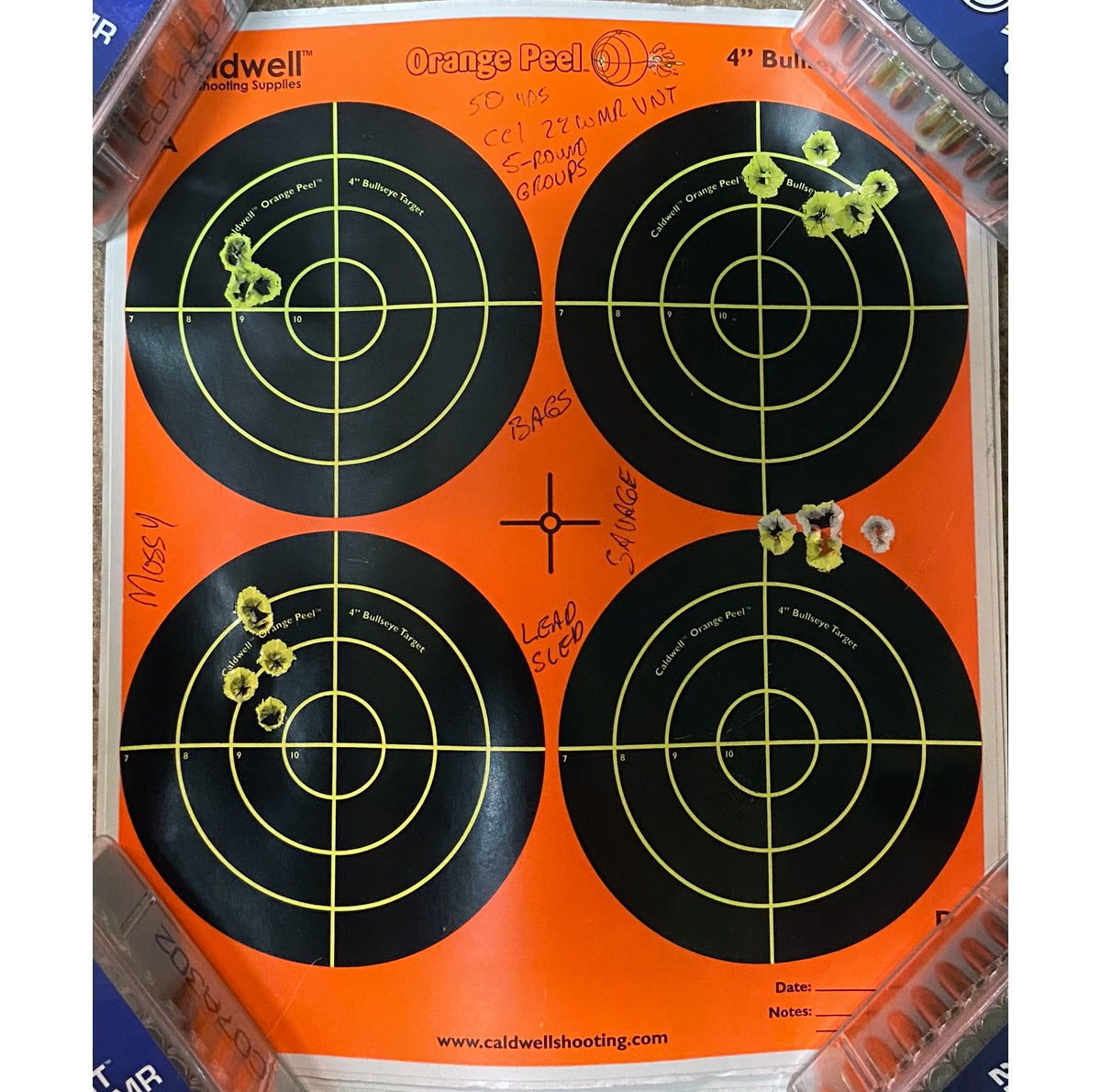
(Photo © Russ Chastain)
Moving out to 100 yards, I decided to forgo the Savage and stick with the Mossberg. The first 5-shot group was fired with the center of the paper as my aiming point and measured 1-5/8″ — and if you eliminate the flyer, it’s a one-incher.
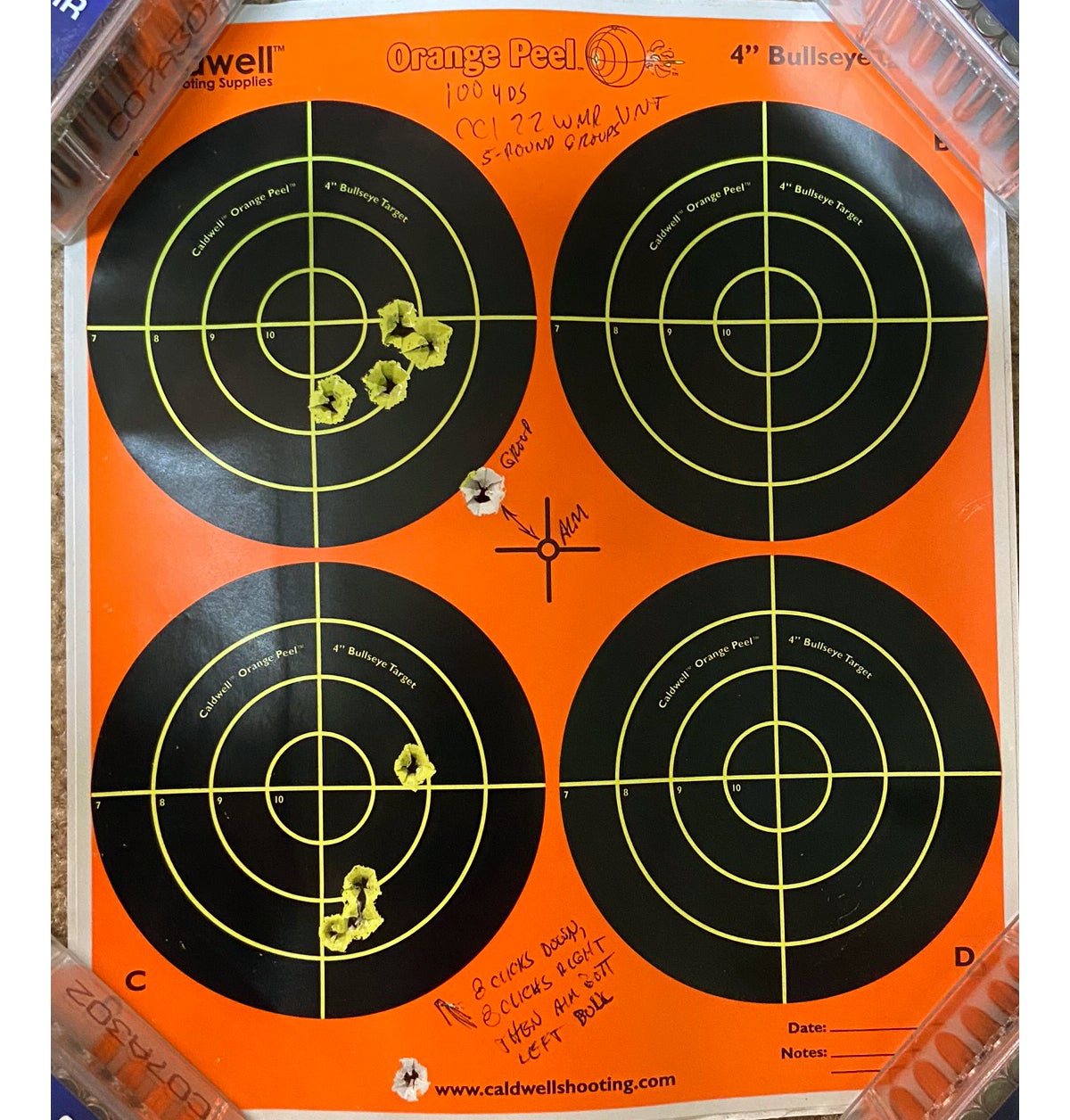
(Photo © Russ Chastain)
This rifle had been hitting high left consistently, so I adjusted the scope down 8 clicks and right 8 clicks and fired five more, aiming at the lower left bullseye. That group had 2 flyers and a cluster of three in less than a half-inch. The overall group size (including flyers) is 2-5/8 inches.
After a Break
I decided to knock off for a while, because I was getting a bit overheated. I figured the rifles could use a good cleaning, too, so I retreated to my office to cool off and get to work on that.
I gave each rifle a good bore cleaning, and the Mossberg was by far the skankiest. Then I hit the range again the following morning, set up at 100 yards, and fired a pair of 10-shot groups with the VNT ammo. Each rifle had its identical scope set at 9x, and I aimed at the center of each target (between the 4 bullseyes).
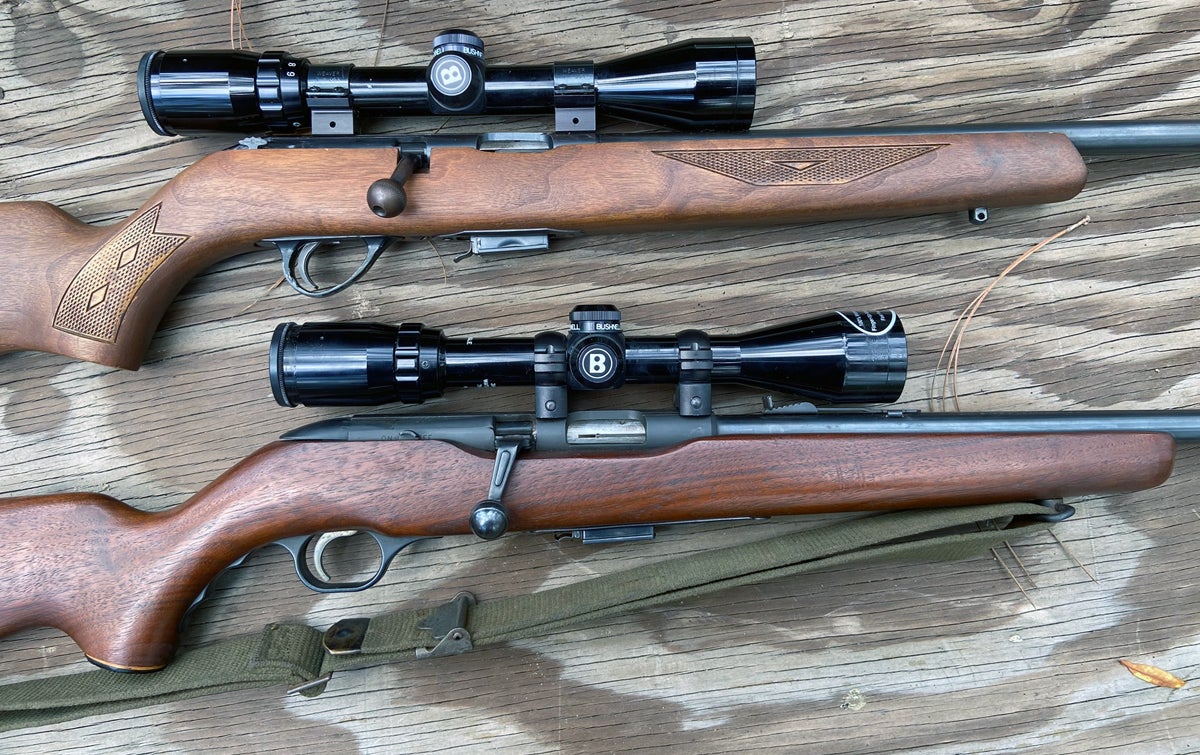
(Photo © Russ Chastain)
The Mossberg’s performance was surprising as well as confusing, with 9 shots creating an unpleasantly-large group that measures 2-7/8″ — but the real kicker was a high-and-right flyer that almost missed the target! It’s possible this was my first shot.
For now, I’m going to chalk the Mossberg’s performance up to rifle trouble of some variety. I cleaned the rifle from the muzzle, and it’s possible that I nicked the crown and created some damage that I can’t see with an eye loupe magnifier. I’ll have to give that one some more love when I get a chance.
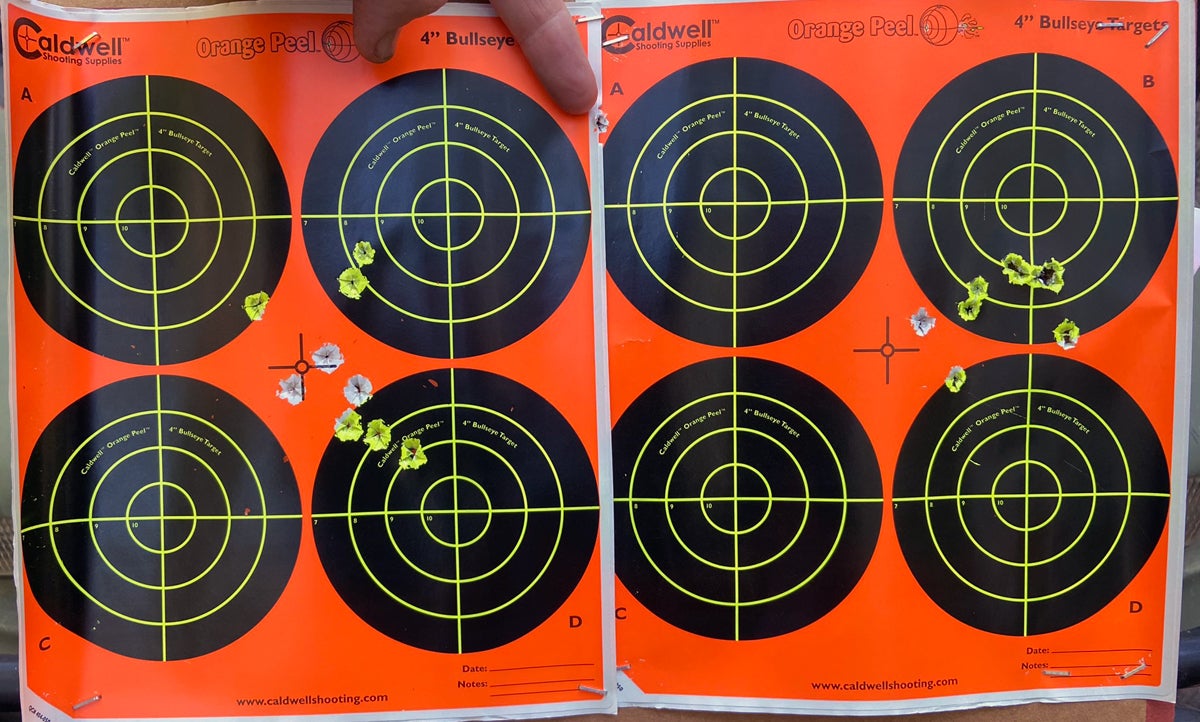
(Photo © Russ Chastain)
The Savage 65M placed all ten shots in a 2″ circle, which is not the best I’ve ever done, but I was not shooting under the best conditions. I’m certain the ammo and rifle can do better than this, and I’m satisfied that CCI’s 22 WMR VNT ammo is of good high quality and consistency.
The Revolver
My old Colt single action revolver likes the VNT ammo just fine, ringing the Birchwood Casey steel gong as long as I aimed a touch high with its fixed sights. I love this old wheel gun! And VNT ammo gives it more oomph than it already had.
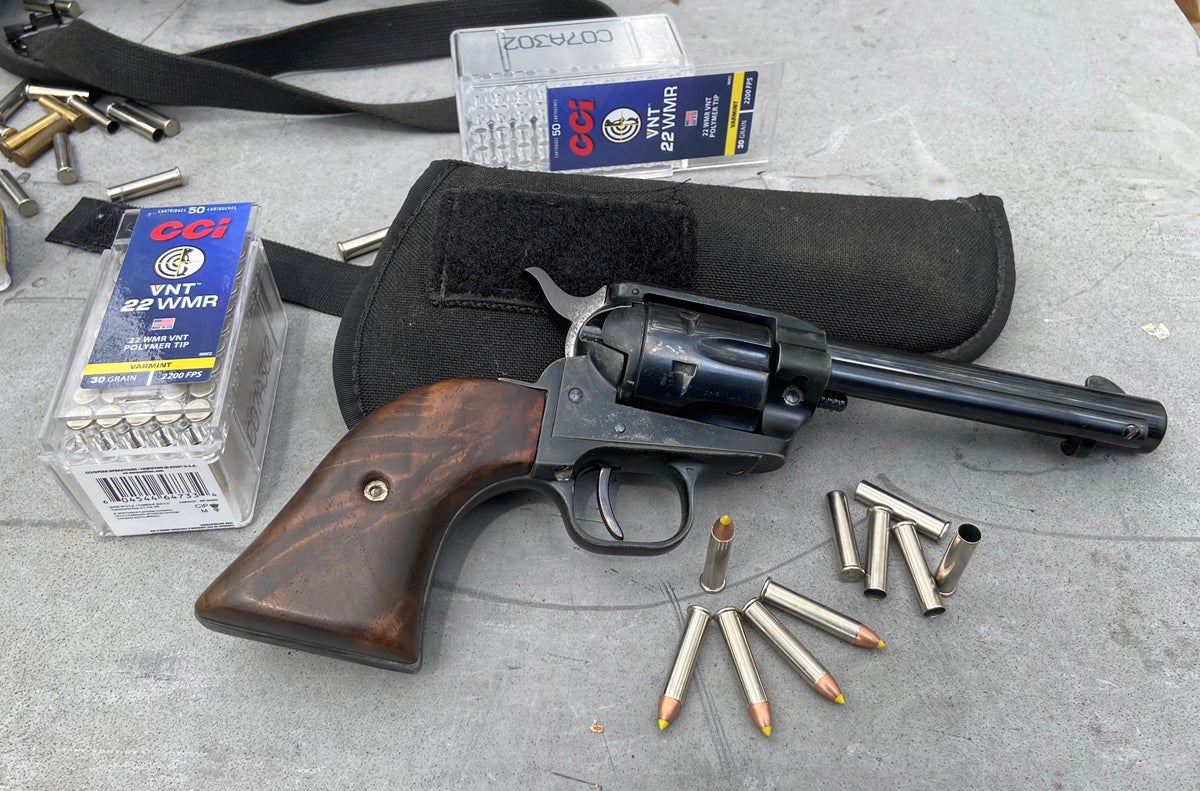
(Photo © Russ Chastain)
Conclusion
In the end, I have to admire this new load and especially the VNT bullet, and its explosive performance on the oil can gives me a bit of an itch to target some coyotes with a 22 Mag and CCI VNT ammo.
It’s good stuff, and if you have a 22 Magnum rifle and can find it in stock anywhere I recommend you jump on it.
The post CCI’s 22 WMR VNT Ammo is Truly Impressive appeared first on AllOutdoor.com.


